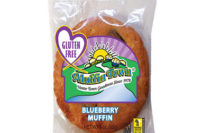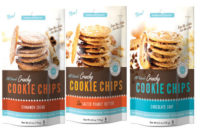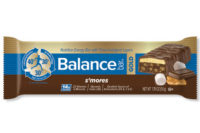As more consumers shift their attention to the foods they eat in the morning, bakers and snack food manufacturers are redefining the breakfast foods segment by offering downsized portions that are easier to eat and are nutritious.
Today’s consumers know that they need to eat healthier and that breakfast is the most important meal of the day. In recent years, breakfast foods manufacturers have been stepping up to the plate and introducing traditional and nontraditional products that enable consumers to address both these factors simultaneously. As a result, mornings are becoming a healthier mealtime for consumers and an innovative profit center for bakers.
Evidence of this can be seen in the foodservice industry. According to NPD Group, a Port Washington, N.Y.-based market research firm, fast-food breakfast sales have shown double-digit increases during the past five years, despite decreasing overall sales in the restaurant segment during this period. By expanding the category, manufacturers are redefining breakfast to include new ingredients and product lines geared toward consumers’ evolving taste preferences and desire to eat healthier.
Research shows that consumers are looking for more portable, healthy options that fit with their lives. NPD Group reports that the latest breakfast trends include downsized portions that are easier and healthier to eat. Traditional breakfast items, such as eggs, sausage and cheese, served in a single breakfast bowl, between a muffin or wrapped in a tortilla enable people to eat breakfast while on-the-go. A growing number of baked goods and cereal manufacturers have entered the bar segment with unveiled single-serve products that offer consumers portable new breakfast options.
Such products may also appeal to the millions of consumers who typically forego breakfast. In 2011, 31 million people in the U.S. said they skipped breakfast, according to NPD Group’s National Eating Trends Report. These consumers offer lots of potential for nontraditional breakfast food manufacturers.
“The nontraditional categories offer a portable, convenient and balanced nutritional breakfast for consumers who normally go without,” says Betsy Frost, marketing manager for BFAST, a breakfast shake line from Minneapolis-based General Mills. “With BFAST, we’re not trying to compete with bakers or the typical breakfast food, since we’re targeting those who know they should eat breakfast but tend to skip it. We support breakfast of any kind and encourage consumers to eat breakfast whenever they can.”
A Kellogg’s Breakfast in America survey, meanwhile, found that more people would eat breakfast if the availability of convenient breakfast items increased. To that end, the Battle Creek, Mich.-based company is rolling out several new breakfast products, including Special K Nourish hot cereal and bars, and Kellogg’s To Go breakfast shakes. Geared toward consumers who are focused on eating better and less, these no-fuss products may also appeal to breakfast skippers.
London-based market research firm Euromonitor International reports, however, that the retail volume sales of cereals, an easy-to-make breakfast staple, decreased by 2% in 2012. It cites convenience and nutrition as the main drivers for growth in alternative options. This finding opens the door for more breakfast-oriented baked goods with healthier profiles.
Creative breakfast bagels
Still, the traditional breakfast foods category remains relevant, as consumers striving to eat healthier make a morning meal part of their daily agenda. Consider the bagel segment: In the 52 weeks ending Dec. 30, 2012, dollar sales in the refrigerated bagels segment totaled $124.54 million on unit sales of 78.14 million, up 1% and 0.82%, respectively, over the same period a year ago, according to IRI Group, a Chicago-based market research firm.
Much of the bagel innovation is at the operator level. “We’ll see customers use an Asiago flavor or jalapeno or even a plain bagel and make innovative sandwiches with fresh and spicy ingredients,” says Dave Harris, president of The Original Bagel Co., West Caldwell, N.J. “Lots of cool ingredients are being put on a bagel sandwich, such as Pico de Gallo and fire-roasted tomato sauce. Despite all of the positive press surrounding gluten-free products, the core sales of bagels as a traditional breakfast product remain strong.”
Don’t forget GF and protein
Along with portability, fiber and protein are becoming more popular among consumers. In fact, when considering what makes a breakfast nutritious, Bellevue, Wash.-based The Hartman Group’s Compass Eating Database reports that 54% of consumers think fiber is important, while 49% say it’s protein.
“This is based on the growing aging population and people wanting to and knowing they need to eat better,” says Tim Sinclair, co-founder of U-Be-Livin-Smart in Concord, Ontario. His company’s nutrient-dense “Karma”ffin muffin line includes protein, fruits, vegetables and fiber.
“Traditional bakery products may not [always be] nutritious,” Sinclair says. “[When it comes to a meal,] people will always be looking at its components. [Depending on the ingredients,] bakery items will be looked at as a good option or not very healthy.”
Frost, meanwhile, says that “people are seeking more protein at breakfast and products like General Mills’ Nature Valley Protein Granola, which includes 10 g. of protein per serving, are popping up.”
These healthier ingredient profiles have also led to continued innovation in gluten-free baked goods geared for breakfast. This past year, Glutino Food Group, Paramus, N.J., launched several gluten-free breakfast items, including toaster pastries in strawberry and apple cinnamon flavors, and the first instant, gluten-free pancake mix, which keeps in the refrigerator for up to four days after being opened.
“While cereal and baked breakfast foods are still very popular breakfast choices in the U.S., alternative options like Greek yogurt, fruit and bars are now competing for share of stomach,” says Patrick O’Brien, marketing manager, bakery, for Ingredion Inc., Westchester, Ill. Ingredion provides texture, sweetness and nutritional ingredients, as well as bakery and cereal application experts, that can help manufacturers achieve the nutrition profile they desire without affecting a product’s taste, texture or quality.
O’Brien adds that while consumers are looking for better-for-you products, they still want these products to have the same taste, texture and product quality equivalent as their full-fat/full-sugar counterparts. “These alternatives are coming in the form of nutrition by addition as well as nutrition by reduction,” he explains. “In the nutrition-by-addition arena, we see strong interest in health claims around the areas of satiety and energy as well as claims around whole grain, fiber fortification and bone health. In the area of nutrition-by-reduction, we see manufacturers coming to market with alternatives to their existing offerings that are lower in sugar, lower in fat, and in turn, lower in calories. The challenge with replacing these types of ingredients is the overall impact on taste, texture, sweetness and product quality.
“The growth in gluten-free is another interesting factor affecting the baked goods and cereal market. Similar to the texture and taste challenges a manufacturer faces when reducing sugar or fat, the manufacturer faces a new set of challenging obstacles when replacing wheat flour.”
Adds Laura Kuykendall, Glutino’s director of marketing: “Certainly, convenience and meals on-the-go have become an important factor in the breakfast category, but sales of our traditional products, like gluten-free cereal and gluten-free English muffins, remain strong.”
Glutino has also revamped its Gluten Free Pantry baking mix line to improve nutritional values, including adding fiber and protein to fortify six of the 11 mixes. “We also launched a ‘just-add-water’ baking mix concept with the Instant Pancake Mix, which provides not only convenience, but prevents cross-contamination for gluten-free eaters,” Kuykendall adds.
Morning routine
Today’s consumers are more adventurous in terms of food experimentation and substitutions, yet they’re typically more inclined to be so in the afternoon and evening hours. “Breakfast innovation is interesting, but people aren’t as adventurous in the morning,” Sinclair observes. “People want something safe in terms of indulgent foods and won’t stray too far away from what they’re familiar with.”
Whether they’re taking the traditional path or veering off toward nontraditional products and ingredients, manufacturers are providing consumers with many new choices in hopes of getting a competitive advantage in the breakfast segment.
“Breakfast time is an interesting area to market, and one of those segments that—other than the cereal guys who have it figured out—is wide open,” Sinclair notes. “There’s a great deal of opportunity for portable, convenient food, but there’s also a physical settling that people do with breakfast to arrange their day. Whether they do it with a muffin or other baked good, breakfast is the time when people organize their day.”
Either way, breakfast food manufacturers are finding that the morning hours are adding up to profit potential in traditional and nontraditional items that are both healthy and convenient.









